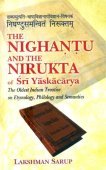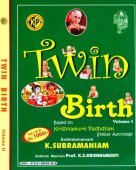Division: 1 definition
Introduction:
Division means something in Hinduism, Sanskrit. If you want to know the exact meaning, history, etymology or English translation of this term then check out the descriptions on this page. Add your comment or reference to a book if you want to contribute to this summary article.
Images (photo gallery)
In Hinduism
Yoga (school of philosophy)
Source: ORA: Amanaska (king of all yogas): A Critical Edition and Annotated Translation by Jason Birch1) Division (between substances) can be denoted by the Sanskrit term Vibhakti, according to the Niśvāsakārikā (Jñānakāṇḍa verse 12.162-63).—Accordingly: “When a Brahmin, Kṣatriya, Vaiśya or Śūdra is a knower of the highest reality, [then] no distinction exists [between them], just as no division (vibhāga) exists [between] fire placed in fire, milk in milk [or] water poured into water. [This] truth has been spoken by Śiva”.
2) The Division (of the Sakala contemplation) is denoted by the Sanskrit term Prabheda, according to verse 13.7cd-8 of the Mālinīvijayottaratantra.—Accordingly, “If one attains identification [with the water element, then], within six months steadiness is achieved. Within three years one attains gnostic vision of the water-realm. In the motionless division (nirvyāpāra-prabheda) [of the Sakala contemplation] also, one is conjoined to the reality level of water [and becomes] in all respects similar to water”.

Yoga is originally considered a branch of Hindu philosophy (astika), but both ancient and modern Yoga combine the physical, mental and spiritual. Yoga teaches various physical techniques also known as āsanas (postures), used for various purposes (eg., meditation, contemplation, relaxation).
See also (Relevant definitions)
Full-text (+7919): Vibhaga, Viccheda, Bhinnabhagahara, Pariccheda, Pravibhaga, Patti, Prabhaga, Uttarapada, Vibhakti, Varsha, Bhajana, Harivarsha, Kriyapada, Vibhajana, Prabheda, Bhagahara, Bheda, Uttarakuru, Bhakti, Saumya.
Relevant text
Search found 348 books and stories containing Division; (plurals include: Divisions). You can also click to the full overview containing English textual excerpts. Below are direct links for the most relevant articles:
Vakyapadiya of Bhartrihari (by K. A. Subramania Iyer)
Verse 3.6.16 < [Book 3 - Pada-kāṇḍa (6): Dik-samuddeśa (On Position)]
Verse 3.1.16 < [Book 3 - Pada-kāṇḍa (1): Jāti-samuddeśa (On the Universal)]
Verse 3.6.5 < [Book 3 - Pada-kāṇḍa (6): Dik-samuddeśa (On Position)]
Introduction to Dhammasangani (by U Ko Lay)
Division III - Nikkhepa Kanda < [Part II - The Dhammasangani]
Guide to Tipitaka (by U Ko Lay)
Brihat Samhita (by N. Chidambaram Iyer)
Karmic Astrology—a Study (by Sunita Anant Chavan)
Part 2.2.2 - Units of time < [Chapter 2 - Jyotiḥśāstra and the Concept of Karman]
Part 2.1.1 - Concept of Sūrya (the Sun) < [Chapter 2 - Jyotiḥśāstra and the Concept of Karman]
Part 2.2 - Jyotiḥśāstra in the Brāhmaṇa Period < [Chapter 3 - Development of Jyotiḥśāstra and Karman in the Literature]
Puranic encyclopaedia (by Vettam Mani)
Related products
(+8 more products available)







